Monday, January 1, 1945
On the Western Front... The German Luftwaffe makes a series of heavy attacks on Allied airfields in Belgium, Holland and northern France. They have assembled around 800 planes of all types for this effort by deploying every available machine and pilot. Many of the pilots have had so little training that they must fly special formations with an experienced pilot in the lead providing the navigation for the whole force. The Allies are surprised and lose many aircraft on the ground. Among the German aircraft losses for the day are a considerable number of planes shot down by German anti-aircraft fire. Allied losses amount to 300 planes opposed to about 200 German aircraft shot down. Meanwhile, the land battle in the Ardennes continues with the Allied counterattacks gathering force. The most notable gains are by the US 8th Corps. Farther south in Alsace the forces of German Army Group G begins an offensive in the Sarreguemines area (Operation Nordwind) towards Strasbourg. The US 7th Army retires before this attack on orders from Eisenhower.
On the Eastern Front... In Budapest, Soviet forces capture a railway station in the eastern part of the city in what is described as bitter hand-to-hand fighting.
Tuesday, January 2, 1945
On the Eastern Front... German forces launch counterattacks northwest of Budapest which aim to break the Soviet siege of the city. The main forces involved in this offensive are those of the 4th SS Panzer Corps (Gille), 3rd SS Panzer Division Totenkopf and 5th SS Pz. Div. Wiking, [which have been withdrawn from the OKH reserve behind Warsaw without the consent or knowledge of Guderian, the German Army Chief of the General Staff] and 96th Infantry Division. The Soviet 31st Guards Rifle Corps, of 4th Guards Army (part of 2nd Ukrainian Front), is driven by about 20 miles.
On Western Front... In the Ardennes, US 3rd Army troops take Bonnerue, Hubertmont and Remagne. In Alsace, the German pressure and the US 7th Army withdrawals continue.
From Berlin... Hitler turns down requests from Model and Manteuffel for withdrawals from the area west of Houffalize.
Over Germany... About 1000 USAAF bombers nominally attack troop concentrations and communications in western Germany while about 1000 RAF bombers strike Nuremburg and Ludwigshafen.
From Britain... Admiral Sir Bertram Ramsay, Naval Commander in Chief Allied Expeditionary Force, and organizer of the Dunkirk evacuation, is killed in an airplane accident while traveling from Paris to Belgium.
In the North Atlantic... An American Sikorsky helicopter is used in convoy escort duties for the first time.
In the Caroline Islands... Fais Island is occupied by an American amphibious force.
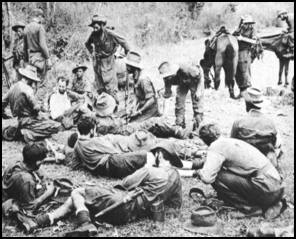
Wednesday, January 3, 1945
In Burma... There are British landings at the northwest tip of Akyab Island in the Arakan area. A Commando and an Indian brigade are involved but there is little resistance from the Japanese. Inland, troops of British 33rd Corps capture Yeu, 22 miles northwest of Shwebo, in their advance to the Irrawaddy River. Chinese forces have captured Wanting on the Burma Road.
In the Pacific... The British submarine Shakespeare is depth charged by Japanese patrol boats.
On the Western Front... In the Ardennes there are German attacks on the narrow corridor leading to Bastogne which succeed in disrupting the timetable of the planned American attacks but fail to achieve any advance. Forces of the US 3rd Army and US 1st Army are attacking toward Houffalize from the south and the north, respectively. In Alsace, the German attacks and the American retreat continue. The US 6th Corps (part of US 7th Army) is being pressed particularly hard in the area around Bitche. Farther south, there is also fighting near Strasbourg.
On the Eastern Front... Soviet forces are engaged by German counterattacks southeast of Komarno aimed at the relief of the encircled garrison in Budapest. Several places on the southern bank of the Danube River have been occupied by the German forces.

Thursday, January 4, 1945
On the Western Front... The fighting in the Ardennes continues; a German counterattack near Bastogne is repulsed by troops of US 3rd Army. There are attacks by US 8th and 3rd Corps and by the British 30th Corps. Some of the units of the 6th SS Panzer Army (Dietrich) are withdrawn and sent to the Eastern Front. In Alsace, the German attacks in the Bitche area continue.
In Burma... Akyab Island is completely occupied by forces of the British 14th Army. The port and airfield are secured.
In the Occupied Dutch East Indies... Three British carriers of Admiral Vian’s TF63 attack the oil refineries at Pankalan Brandan on Sumatra.
In the Philippines... Americans B-24 Liberator bombers attack Clark Field in Manila, on Luzon and claim to destroy 20 Japanese aircraft. Shipping near Luzon is also attacked. It is claimed that 35 Japanese vessels have been sunk or severely damaged.
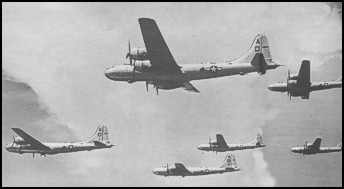
Friday, January 5, 1945
In the Bonin Islands... Admiral Smith leads a force of cruisers and destroyers to shell Iwo Jima, Haha Jima and Chichi Jima. There is a simultaneous attack by USAAF B-29 Superfortress bombers.
In Burma... Shwebo is taken by the British 2nd Division of British 33rd Corps (Stopford) as the advance to the Irrawaddy River continues.
In the Kurile Islands... Admiral McCrea leads three cruisers and nine destroyers to bombard Suribachi Wan.
In Moscow... The Soviet government gives formal recognition to the Polish Lublin Committee as the Provisional Government of Poland. The USA and Britain declare their continued recognition of the Polish government in exile, based in London.
In Liberated Greece... The fighting between the British and the Greek Communist forces comes to an end in the Athens area. Field Marshal Alexander and British political representatives arrive in Athens for talks with the Communist leaders and the Greek government.
On the Western Front... In the Ardennes, the US 3rd Army reports reduced activity on its line while US 1st Army continues its attacks. There are German attacks just north of Strasbourg. Eisenhower's decision to divide command responsibility for the Allied defenses around the bulge between Montgomery in the north and Bradley in the south is made public.
Saturday, January 6, 1945
On the Eastern Front... Some 65 German tanks were destroyed or disabled, by Soviet forces, in the attempt to relieve the garrison surrounded in Budapest.
In Moscow... Churchill sends a personal note to Stalin asking whether a renewal of the Soviet offensive along the Vistula River can be expected during January because of the Allied situation on the Western Front is "very heavy" -- in Churchill's words.
On the Western Front... There are various local actions all along the Ardennes front. US 1st Army, part of British 21st Army Group, makes gains of 1000-3000 yards in an attack south of Stavelot, threatening the main German east-west supply road from Laroche to St. Vith.
From Berlin... Hitler again orders no retreat after Rundstedt, the Commander in Chief West, again requests that German forces be allowed to withdraw from the Ardennes salient because of the Allied pressure.
Sunday, January 7, 1945
In Italy... There are some limited operations by British 8th Army to complete the Allied hold on the south bank of the Senio River. San Alberto is captured by British and Canadian troops. The wet weather and a lack of reinforcements and extra supplies prevents the Allied armies from launching any large scale offensives at this time.
On the Western Front... The attacks of the US 8th Corps of US 1st Army, along the line of the Ourthe west of Houffalize, record progress around Laroche. German attacks in Alsace also continue with some success south of Strasbourg in the area around Erstein.
On the Eastern Front... In Hungary, German forces capture Esztergom, some 25 miles northwest of Budapest in their attempt to relieve the German led garrison in the capital.
In London... Stalin, in response to Churchill, indicates that the Soviet timetable for a new offensive will be no later than the second half of January.
Monday, January 8, 1945
In Burma... British 14th Army troops, southeast of Yeu, have reached within 4 miles of Shwebo, 55 miles northwest of Mandalay.
On the Eastern Front... Northwest of Budapest, Soviets forces engage German armor and infantry forces. Street fighting in Budapest continues. Soviet forces are approaching the town of Komarno on the Danube River.
On the Western Front... Allied forces eliminate German positions on the west bank of the Maas River. In the Ardennes, American forces now control 9 miles of the Laroche-St. Vith road. US 3rd Army captures Flamierge, 9 km northwest of Bastogne, on the southern flank of the German held salient. Meanwhile, in Alsace, the battles north and south of Strasbourg continue. The US 7th Army is under considerable pressure near Rimling and Gambsheim.
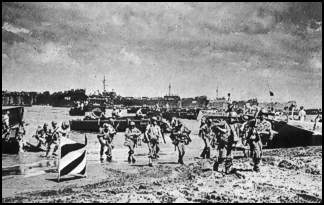
Tuesday, January 9, 1945
In the Philippines... Elements of US 6th Army (General Krueger) begin landings on Luzon at Lingayen Gulf (Operation Mike 1) with naval support under the direction of Admiral Kinkaid. The US 1st Corps (General Swift) come ashore, from the ships Task Force 78, around San Fabian. The assault units are from US 43rd and 6th Infantry Divisions. The US 14th Corps (General Griswold) disembarks, from ships of Task Force 79, near Lingayen village. The assault units are from US 37th and 40th Divisions. The Japanese commander in north Luzon is General Yamashita. In addition to the 150,000 troops under his direct leadership in the north of the island, Yamashita also has available the 110,000-strong Japanese forces around Manila and to the south. The closest Japanese forces are from the 23rd Division. Yamashita does not contest the landings during the day. However, continued Japanese air attacks in which the battleship USS Mississippi and two cruisers are hit. In a night attack by explosive boats several landing craft and transports are damaged.
In Formosa and Okinawa... The fleet carriers of Task Force 38 attack targets on Okinawa and Formosa in conjunction with US Army Air Force B-29 Superfortress bombers from bases in China. This is intended to give cover to the landings on Luzon. One Japanese destroyer is sunk along with seven other ships.
On the Western Front... The US 3rd Army renews its attacks northeast and southeast of Bastogne.
In the Irish Sea... The German U-1055 sinks 4 ships.
In London and Washington... An Anglo-American joint statement is issued that notes increased U-boat activity in December 1944 and higher shipping losses. Nonetheless, it states that all forces are continuing to be supplied regularly.
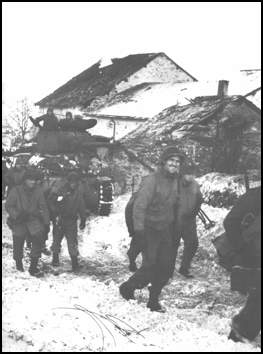
Wednesday, January 10, 1945
On the Western Front... In the Ardennes, American forces are engaged near Laroche. The British 30th Corps is advancing on the town from the west, capturing Bure and Samree. German forces are withdrawing, in good order, from the western tip of the salient. St. Hubert, 15 miles west of Bastogne, has been evacuated by the Germans under pressure from Allied forces.
On the Eastern Front... Soviet forces continue to be engaged in street fighting in Budapest. The island of Obuda is captured. The Soviet advance along the north bank of the Danube River, in southern Slovakia, reaches the Nitra River -- 80 miles from Vienna and less than 50 miles form Bratislava.
In the Philippines... The US forces continue to come ashore on Luzon. Their beachhead is now several miles wide and deep.
In Burma... While the advance of British 33rd Corps to the Irrawaddy River is attracting Japanese attention, British 4th Corps is moving southward to the west of Chindwin with the intention of crossing the Irrawaddy River near Meiktila. Gangaw is captured in this advance.
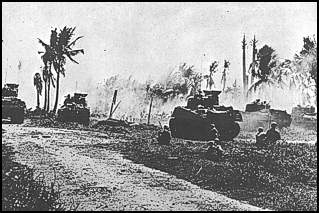
Thursday, January 11, 1945
In the Philippines... On Luzon, the US 25th Division and an armored group land at Lingayen to reinforce the American beachhead. The first serious fighting begins ashore. There are more Kamikaze attacks on the American ships. Many smaller craft are damaged.
In the South China Sea... Aircraft from the US 3rd Fleet (Halsey) sink 25 ships and damage 13 others off the coast of Indochina in attacks on four Japanese convoys.
In the Central Pacific... Japanese forces initiate Operation Kongo involving 6 submarines launching Kaiten torpedoes against Allied naval bases. One landing craft is sunk and a munition ship is damaged.
On the Western Front... Units of the US 3rd Army and the British 30th Corps join up near St. Hubert as the German salient in the Ardennes is further reduced. To the south, the fighting in the US 7th Army around Bitche is also continuing but German attacks are being held.
In the Norwegian Sea... A British squadron inflicts heavy damage on a German coastal convoy of southern Norway. Half of the estimated 7 or 8 vessels are sunk.
Friday, January 12, 1945
On the Eastern Front... The final Soviet winter offensive begins with attacks by 1st Ukrainian Front (Konev) from the Sandomierz bridgehead on the west bank of the Vistula River with 7 armies in the front line. The defending German forces are mostly from Army Group Center and Army Group A with 4th Panzer Army defending the breakthrough area. The German troops are outnumbered by at least four or five to one in all classes of equipment and prove incapable of resisting the Soviet advance.
In Burma... The British 18th Indian Division takes bridgeheads over the Irrawaddy north of Mandalay at Kyaukmyaung and Thabeikkyin. Fierce Japanese attacks in these areas immediately begin. In the Arakan there are landings of British Commando troops near Myebon on the mainland between Akyab and Ramree.
In Occupied French Indochina... There are air attacks from the planes of the carriers of Task Force 38 against Japanese installations at the naval base at Camranh Bay and others areas in Indochina. TG 38.5 continues the attacks from its specially trained carriers. Japanese losses to the attacks amount to 29 ships of 116,000 tons. Eleven small warships are also sunk.
On the Western Front... There are new attacks on the north flank of the Ardennes salient by US 7th and 18th Corps of the US 1st Army.
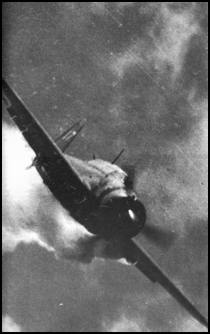
Saturday, January 13, 1945
In the Philippines... The escort carrier, Salamana, is badly damaged in a Kamikaze attack. These are now becoming rare, however, because most of the Kamikaze aircraft have been lost and the rest withdrawn. Ashore, the US bridgehead is steadily being extended. Damortis is taken.
On the Eastern Front... In East Prussia, the Soviet 3rd Belorussian Front (Chernyakhovsky) strikes the German 3rd Panzer Army, part of Army Group North (Reinhardt). The attack begins in the early morning hours but progresses very slowly in spite of intensive supporting fire. Schlossberg and Kattenau change hands several times during the fighting. Meanwhile, in southern Poland, the 1st Ukrainian Front achieves an advance of 40 km along a 64 km frontage.
On the Western Front... In the Ardennes units of US 1st Army from the north and the British 30th Corps from the west, reach Ourthe between Laroche and Houffalize. US 3rd Army forces are also moving toward Houffalize from the south.
Sunday, January 14, 1945
On the Eastern Front... The Soviet 2nd Belorussian Front begins attacks on German Army Group North in heavy snow conditions. The immediate success achieved in the fighting results in the cancellation of planned supporting artillery fire. To the south, Soviet 1st Belorussian Front (Zhukov) opposite Warsaw and to the south launches an offensive from the Pulawy and Magnuszew bridgeheads. The latter bridgehead is only 15 miles wide and 7 miles deep but contains some 400,000 troops and 1700 AFVs. Poor weather results in limited air support. The attack begins with a short artillery bombardment that targets the German 56th Panzer and 8th Corps of 9th Army, part of Army Group Center (Harpe). Success is immediate and both corps are scattered. Meanwhile, forces of 1st Ukrainian Front cut the rail line to Krakow south of Kielce. Farther south in Hungary the Soviets resist German attempts to relieve Budapest and in eastern Czechoslovakia, they take Lucenec.
On the Western Front... The US 1st Army achieves an advance 2 miles toward St. Vith in continuing attacks. British forces attacking southward from Laroche link up with elements of US 3rd Army advancing northwest from Bastogne
Over Germany... The US 8th Air Force resumes strategic operations after a month-long pause caused by the Battle of the Bulge. Some 600 B-17 and B-24 bombers strike oil targets and encounter heavy resistance from Luftwaffe fighters.
In the English Channel... Six German motor torpedo boat flotillas operate in the estuaries of the Scheldt, Thames and Humber rivers during the night (January 14-15).
Over Britain... The last German V1 launched from an He111 bomber lands on Yorkshire.
In Liberated Greece... A cease-fire is agreed between the British and the Communist ELAS organization. ELAS agrees to release all hostages it has taken except those accused of collaboration.
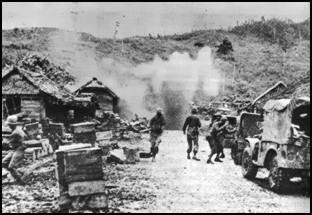
Monday, January 15, 1945
In the Philippines... On Luzon, the US 14th Corps continues to advance south from the beachhead and has now crossed the Agno River. The US 1st Corps is attacking north and east but fails to reach its objective of Rosario.
On the Eastern Front... German Army Group North commits its reserves (7th Panzer Division and Panzer Grenadier Division Grossdeutschland) to battle and these units inflict losses and delays on the Soviet 2nd Belorussian Front. Kielce falls to the 1st Ukrainian Front (Konev). To the south, the 4th Ukrainian Front (Petrov) also goes over to the offensive.
On the Western Front... American forces encounter heavy resistance in attacks toward St. Vith. US 1st Army troops have reached Houffalize, cutting off remaining German forces to the west in the Ardennes salient.
In the Mediterranean... An Italian naval squadron interned in Port Mahon (Minorca) since September 8, 1943, leaves for Malta.
In the North Atlantic... The escort carrier Thane is torpedoed by German U-484 off the Firth of Clyde, along the western coast of Scotland.
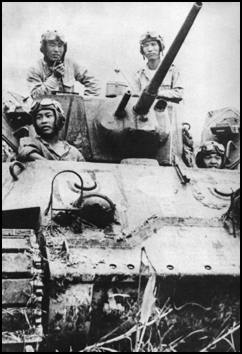
Tuesday, January 16, 1945
In Burma... Namhkam is taken by the Chinese units, which have advanced from Myitkyina along the Ledo Road. The road northeast from Namhkam into Chino is not yet clear.
On the Western Front... There are attacks by the British 13th Corps near Roermond aimed at eliminating the small German salient west of the Maas. In the Ardennes the US 1st and 3rd Armies link up at Houffalize. An Allied offensive aimed at eliminating the German bridgehead across the Rhine River, 8 miles north of Strasbourg, begins about 0200 hrs.
On the Eastern Front... Elements of 1st Belorussian Front capture Radom, an important industrial and communications center and an important position in the German defenses in Poland, while to the north other elements have encircled Warsaw and are fighting their way through the city. Most of the defending German troops have escaped to the west however. Troops of the 1st Ukrainian Front, to the south, are making even better progress and have reached Czestochowa, about 15 miles from Silesia, in Germany. In the last three days , Soviet forces have advance up to 37 miles and created a breach of the German defense about 74 miles long.
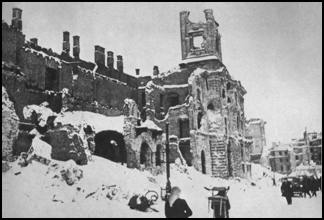
Wednesday, January 17, 1945
On the Eastern Front... The totally devastated city of Warsaw is cleared of German resistance by forces of the 1st Belorussian Front. A Polish unit fighting with the Red Army is involved in the final attacks. To the north, troops of the 2nd Belorussian Front enter Modlin.
On the Western Front... Heavy fog along most of the front reduces Allied offensive action. The British 2nd Army, north of Sittard, successfully holds the village of Dieteren. The US 3rd Army reaches Diekirch.
In London... Empire forces war casualty statistics are published which report a total of 1,043,554 casualties of all ranks up to November 30, 1944. These include 282,000 dead and 80,000 missing.
Thursday, January 18, 1945
On the Eastern Front... Forces of the Soviet 2nd Belorussian Front capture Modlin. The 1st Belorussian Front and the 1st Ukrainian Front are threatening the Polish cities of Lodz and Krakow with encirclement. German forces withdraw from Krakow. Meanwhile, in Hungary, south of Lake Balaton, the German 4th SS Panzer Corps (Gille), part of Army Group South, spearheads a relieving attack towards Budapest and nearly destroys the Soviet 135th Rifle Corps, an element of 3rd Ukrainian Front (Tolbukhin).
On the Western Front... British commandos have landed on the Dutch island of Schouwen. Forces of the British 2nd Army are progressing north of Sittard and have captured the town and road junction of Echt. Fighting continues in the Ardennes. US 3rd Army troops have crossed the Sure River and are engaged in Diekirch.
From London... Admiral Sir Harold Burrough is appointed Allied Naval Commander Expeditionary Force in succession to the late Sir Bertram Ramsay.
Friday, January 19, 1945
On the Eastern Front... Wloclawek on the Vistula falls to elements of 2nd Belorussian Front. Lodz is captured by 1st Belorussian Front forces. Troops of the 1st Ukrainian Front take Tarnow and Krakow, a former capital of Poland. Further south, Nowy Sacz is taken by the 4th Ukrainian Front. To the south, in Hungary, the German 4th SS Panzer Corps, an element of Army Group South, reaches the Danube River at Dunapentele and effectively cuts off most of the Soviet 3rd Ukrainian Front forces from its supplies.
On the Western Front... In the north, Sittard is cleared of German resistance. In Alsace, German forces north of Strasbourg link up with other forces to further north.
In the Philippines... On Luzon, the US attacks are now being concentrated to the south of the beachhead with the aim of striking to Manila. Carmen is taken. On Mindoro, there is a brief flurry of activity as the Japanese try to slow the advance toward Calapan of the US 21st Infantry. Filipino guerrillas are active throughout the island in support of US forces.
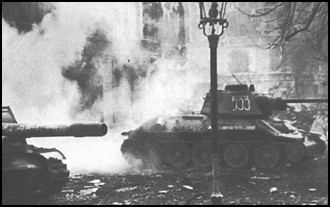
Saturday, January 20, 1945
On the Eastern Front... The Soviet offensive against German forces in East Prussia achieves an important breakthrough in the attacks from the northeast. Tilsit is taken. All the Soviet fronts in Poland are moving forward despite the German resistance. In Hungary, the fighting in Budapest continues but the Soviets now control the Pest half of the town.
In Liberated Hungary... The Hungarian Provisional Government concludes an armistice with the USSR, the USA and Britain. The Hungarians agree to pay reparations and to join the war against Germany.
On the Western Front... French 1st Army (de Lattre) begins an offensive in the Vosges area near Colmar. Bad weather hinders the advance and the defense by the German 19th Army is effective. Progress is gradually made however. To the north, in the Ardennes, the advance of US 3rd Army continues. Brandenburg is taken.
In Burma... On the Ledo Road, the Chinese forces have only a few more miles to clear. The advance from Yunnan has reached Wanting River on the border and from the other direction, Mu-se is taken only 10 miles away.
In the United States... President Roosevelt is inaugurated for a fourth term. Vice President Truman is also sworn in. In his speech Roosevelt promises to continue to work for the Allied victory and for the establishment of peace and security for the postwar world.
Sunday, January 21, 1945
On the Eastern Front... In East Prussia, Soviet attacks penetrate up to 15 miles. The 2nd Belorussian Front (Rokossovsky) forces capture Tannenberg (scene of a significant German victory over Russian forces in 1914). Gumbinnen is also taken. Soviet 1st Belorussian Front (Zhukov) have reach Konin -- within 200 miles of Berlin -- along the road from Warsaw. The 1st Ukrainian Front (Konev) has penetrated some 20 miles into Silesia and threatens the cities of Breslau and Oppeln.
On the Western Front... Witlz falls to the US 3rd Corps in the Ardennes. German forces are making a general withdrawal to the Siegfried Line.
In Burma... There are British landings at the northern tip of Ramree Island. The British 4th and 71st Indian Brigades are put ashore. The battleship, Queen Elizabeth, and an escort carrier are in support but there is little resistance. On the mainland, Monywa on the Chindwin River, is taken by 20th Indian Division (part of British 33rd Corps).
In the Philippines... On Luzon, the US 40th Division takes Tarlac and pushes south toward Clark Field.
Monday, January 22, 1945
On the Eastern Front... As well as the attacks of 1st Baltic and 3rd Belorussian Fronts from the northeast, the German position in East Prussia is being threatened by the northwest advance of 2nd Belorussian Front toward the Elbing and Danzig area. In the attacks from the northeast Insterburg falls while in the other advance, Allenstein and Deutsch Eylau are taken. To the south, Gneizo is taken in the drive of the 1st Belorussian Front toward Poznan. In Hungary, the German 4th SS Panzer Corps, part of Army Group South, reaches the Vali River, only 15 miles (24 km) from Budapest.
On the Western Front... The British 2nd Army is continuing its attacks in the Roermond area and takes St. Joost and other towns near Sittard. In the Ardennes, US 1st Army attacks all along the front between Houffalize and St. Vith.
In the English Channel... German motor torpedo boats attack a convoy north of Dunkirk. Elements of the German 8th Motor Torpedo Boat Flotilla penetrate into the Thames Estuary.
In the Philippines... On Luzon, the US 1st Corps is engaged in heavy fighting near Carmen and Rosario.
In Burma... The British 4th Corps takes Tilin in its continuing advance toward the Irrawaddy River to the south.
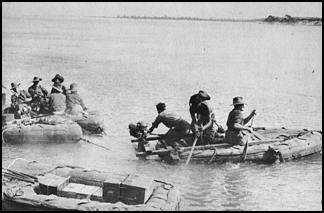
Tuesday, January 23, 1945
In Burma... Myinmu is taken the by 20th Indian Division. This division and the other British 33rd Corps units, which have crossed the Irrawaddy north of Mandalay, attract significant Japanese counterattacks because of the threat posed to Mandalay. This is exactly what General Slim, commanding British 14th Army, has hoped for while British 4th Corps prepares the real advance further south.
In the Philippines... Elements of US 14th Corps take Bamban in their continuing southward attacks and almost reach Clark Field.
On the Eastern Front... As well as the continuing attacks in Poland and East Prussia, there is a new advance from around Miskolc by the 2nd Ukrainian Front (Malinovsky) with both Soviet and Rumanian troops involved.
On the Western Front... St. Vith falls to the attack of tank units from US 18th Corps. The German forces are falling back over the River Our from throughout the Ardennes salient but are losing heavily to Allied air attacks.
In Germany... Count Helmuth von Moltke-Kreisau, leader of the pacifist "Kreisau Circle" organization, is executed.
In France... Charles Maurras, the editor of the Royalist and anti-Semitic newspaper Action Francaise, is put on trial at Lyons for collaboration.
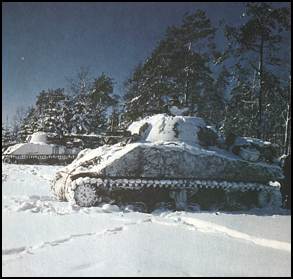
Wednesday, January 24, 1945
On the Western Front... Units from the French 1st Army take crossings over the River Ill in Alsace, on the northern flank of the Colmar pocket. In the Ardennes there are Allied advances north and south of St. Vith. US 3rd Army reaches the Clerf River. The British 2nd Army enters Heinsberg, about 3 miles west of the Roer River.
On the Eastern Front... Soviets forces reach the estuary of the Vistula, southwest of Elbing. Soviet troops of the 1st Ukrainian Front are attacking near Breslau (about 4 miles to the southeast) and Oppeln, the capital of German Upper Silesia, on the Oder River. They take Gleiwitz. New Soviet attacks are launched in Czechoslovakia.
From Berlin... SS leader Himmler is appointed by Hitler to lead the new Army Group Vistula, being formed to oppose the Soviet advance toward Berlin. Himmler has no experience, nor has he demonstrated any aptitude for operational command and his appointment is widely viewed as an insult to the German Army and General Staff.
In the Philippines... Calapan is taken by the US forces on Mindoro. Japanese resistance on the island has been reduced to isolated pockets. Cabanatuan is taken by the US forces on Luzon.
In China... The US 14th Air Force has to abandon Suichuan airfield because of Japanese advances nearby.

Thursday, January 25, 1945
On the Eastern Front... The German forces in East Prussia are effectively cut off and the German evacuation of military personal and civilians from East Prussia begins. The operation continues until the end of the war and is considered the greatest evacuation in history (amounting to 1.5 to 2 million people). About 40 large passenger ships and many other transports as well as practically all the remaining surface ships of the German Navy including the cruisers, Emden and Admiral Hipper are involved. There are considerable losses to the many mines laid in the Baltic by RAF Bomber Command and to the submarines of the Soviet Baltic Fleet. In the fighting to the south, Ostrow is taken by left flank units of the 1st Ukrainian Front; other elements capture crossings over the Oder River near Breslau and Steinau. Meanwhile, in Hungary, the German 4th SS Panzer Corps, an element of Army Group South, is halted by forces of the 3rd Ukrainian Front.
From Berlin... General Reinhardt, who has been in command of the German Army Group Center in East Prussia, is dismissed and General Rendulic is appointed to the renamed Army Group North.
In the Philippines... The US 37th Division, US 14th Corps (Griswold), occupies a large part of the Clark Field air base.
In the Volcano Islands... Iwo Jima is bombarded by the battleship Indiana and a force of cruisers and destroyers. There are also air attacks by B-24 and B-29 bombers. This is the first step in the preparation for the US landings in February.
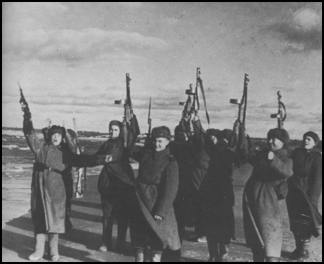
Friday, January 26, 1945
On the Eastern Front... The advance of the Soviet 2nd Belorussian Front reaches the Baltic north of Elbing completely cutting off the German forces of Army Group North in East Prussia.
On the Western Front... Units of US 3rd Army in the Ardennes have now crossed the Clerf River in several areas and are attacking all along the front of US 3rd and 12th Corps.
In Burma... There are British landings on Chedube Island south of Ramree. A small force of Marines goes ashore on the first day. They are later reinforced by the 36th Indian Brigade. On the mainland to the north, the 81st African Division takes Myohaung. Inland, in the advance of 4th Corps to the Irrawaddy River, Pauk is taken by the 7th Indian Division.
Saturday, January 27, 1945
In Burma... The Ledo Road to China is finally cleared when Chinese troops from Burma and Yunnan province link up near Mongyu. General Sultan, who leads the British, American and Chinese in the area, has in fact announced the road as open on January 22nd. Sultan’s forces are now moving south toward Mandalay and Lashio by several routes.
In the Philippines... The US 32nd Infantry Division lands at Lingayen Gulf to reinforce the American troops there.
On the Eastern Front... Forces of the 1st Baltic Front captured the port of Memel and complete the liberation of Lithuania. In Poland, elements of the 1st Belorussian Front have swept around Poznan, where the garrison continues to holds out, and are maintaining their advance to the Oder River. The Soviets are about 100 miles from Berlin. Other elements are attacking near Torun and Bydgoscz.
On the Western Front... Troops from US 3rd Army cross the Our River and take Oberhausen. The gains made by the German Ardennes offensive are now almost completely eliminated.
In France... In Lyons, Charles Maurras, editor of Action Francaise, is sentenced to life imprisonment for collaboration.
Sunday, January 28, 1945
Over Germany... The US 8th Air Force conducts raids on the Ruhr industrial area and the Rhine with 1000 bombers. Oil plants and bridges are the nominal targets.
On the Eastern Front... The advance of the 1st Belorussian Front reaches German Pomerania. Sepolno and Leszno are taken on the flanks of the advance. To the south, 1st Ukrainian Front troops complete the capture of Katowice, in the Dombrova coal basin.
On the Western Front... British forces report progress on the Roer River. The US 1st Army launches attacks east of St. Vith in the Ardennes.
In China... The first supply convoy using the Ledo Road arrives.

Monday, January 29, 1945
On the Eastern Front... There are German counterattacks from East Prussia against the forces of the 2nd Belorussian Front to the west. The German heavy cruiser Prinz Eugen and destroyers support the ground assault with a naval bombardment. Toward the south of the German pocket, Bischofsburg falls to the Soviet forces. Forces of the 1st Belorussian Front encircle the city of Poznan, and the large German garrison, in Pomerania. Dresden, some 95 miles southeast of Berlin, is captured.
On the Western Front... The US 1st Army reports the capture of the town of Bullingen, east of St. Vith. Forces of the US 3rd Army cross the Oure River at two points, 8 miles south of St. Vith.
Over Germany... British bombers strike Berlin three times during the night.
In the Philippines... On Luzon, the US 11th Corps (General Hall) lands at San Antonio north of Subic Bay to join the American offensive. About 30,000 men go ashore on the first day of the landing. Their task is to advance across the neck of the Bataan Peninsula and clear it of Japanese resistance.
Tuesday, January 30, 1945
In the Baltic Sea... In the worst disaster at sea in history, 7000 refugees drown when the Soviet submarine S-13 sinks the German liner Wilhelm Gustloff.
From Berlin... Hitler broadcasts to the nation for the last time. He comments, "German workers, work! German soldiers, fight! German women, be as fanatical as ever! No nation can do more."
On the Western Front... Allied forces capture Gambsheim, a German bridgehead over the Rhine, north of Strasbourg.
In the Philippines... A US battalion is landed to take Gamble Island in Subic Bay. To the north, US 11th Corps begins to advance inland quickly and takes Olongapo on Luzon
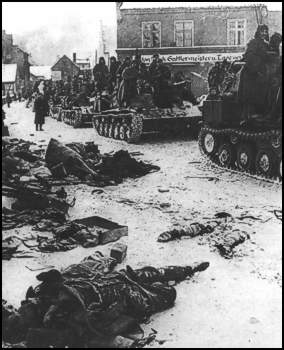
Wednesday, January 31, 1945
On the Eastern Front... Forces of the Soviet 1st Belorussian Front reach the Oder River at Zehden and along a wide front to the south of Frankfurt am Oder. These Soviet positions are less than 50 miles from Berlin.
On the Western Front... Units of US 18th Corps from US 1st Army enter Germany east of St. Vith as they continue their advance from the Ardennes. To the south, in Alsace, French 1st Army attacks near Colmar also make some ground.
In the Philippines... On Luzon, two regiments of General Swing’s 11th Airborne Division are landed by sea near Nasugbu southwest of Manila. Admiral Fechteler leads the naval support with a cruiser and eight destroyers. There is little opposition to the landing. North of Manila, the US advance is still making progress. US 14th Corps units have nearly reached Calumpit in a converging attack.
In London... The Czechoslovakian government in exile recognizes the Polish Lublin Committe as the Provisional Government of Poland.
Copyright © 2018 Ralph Zuljan
